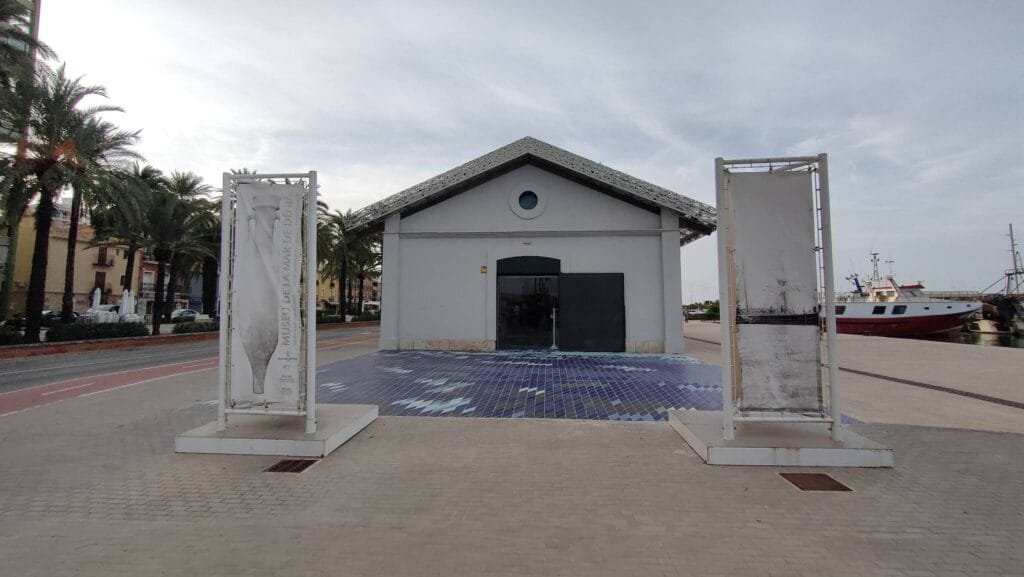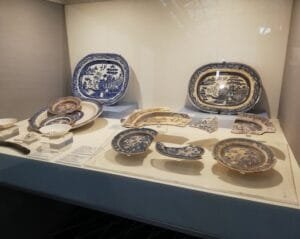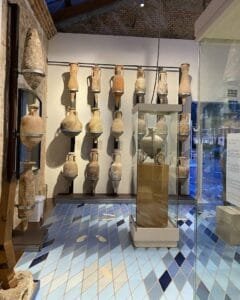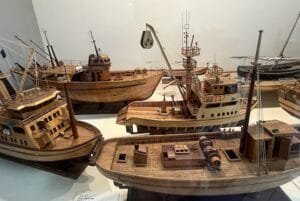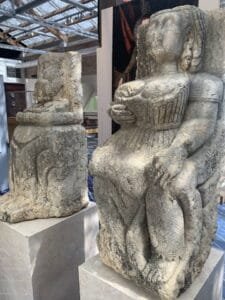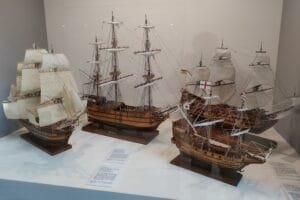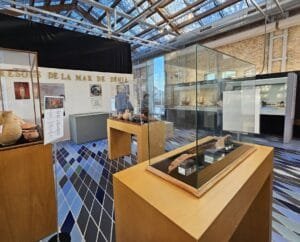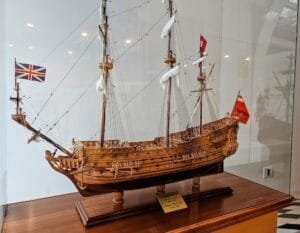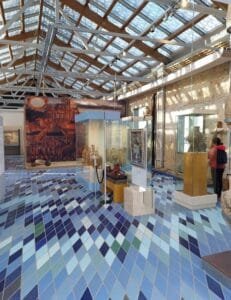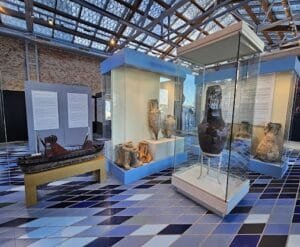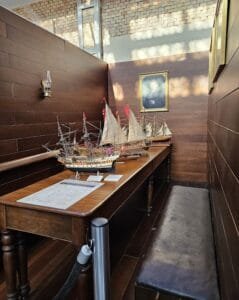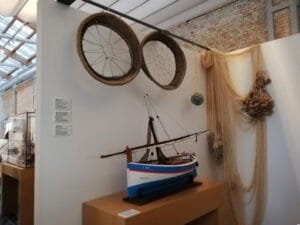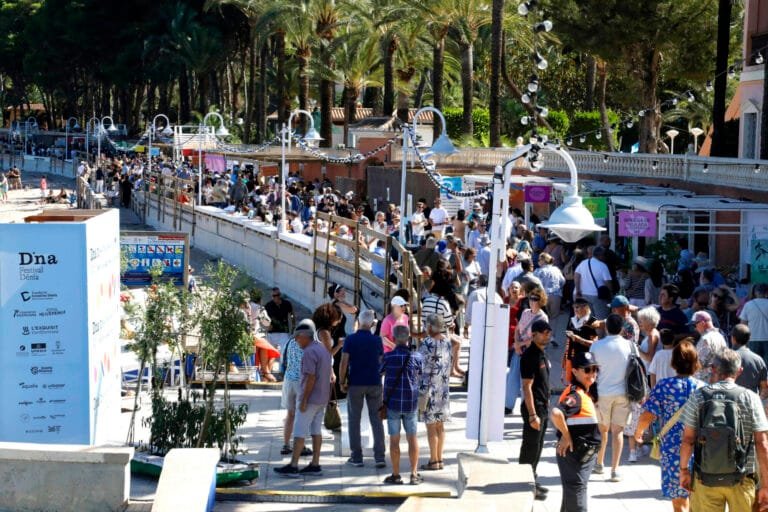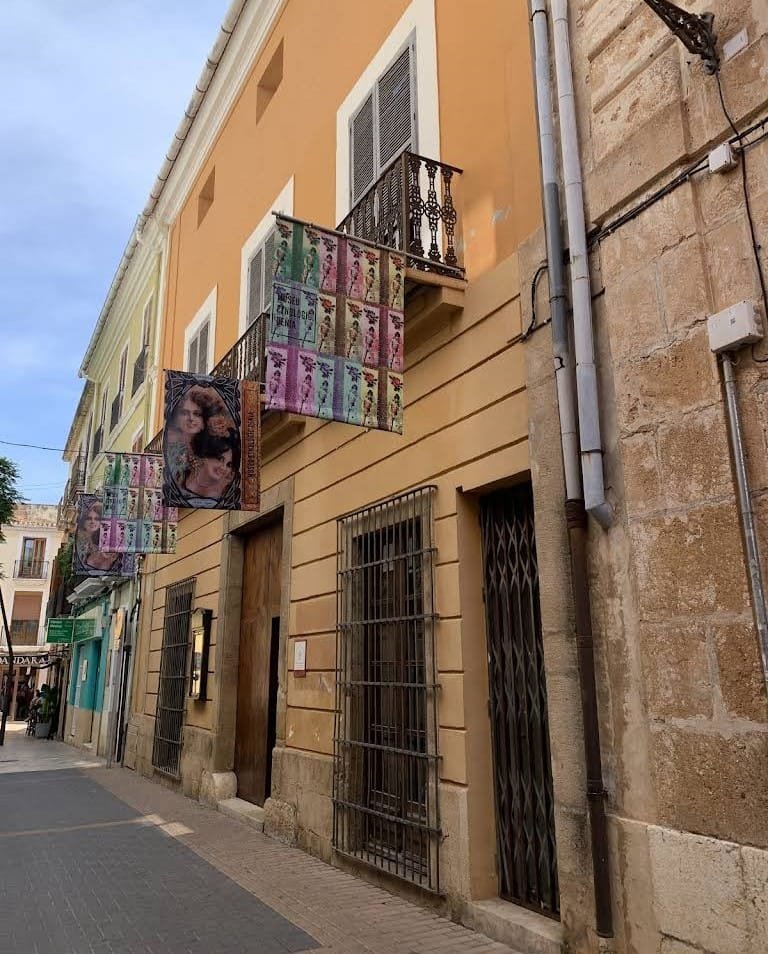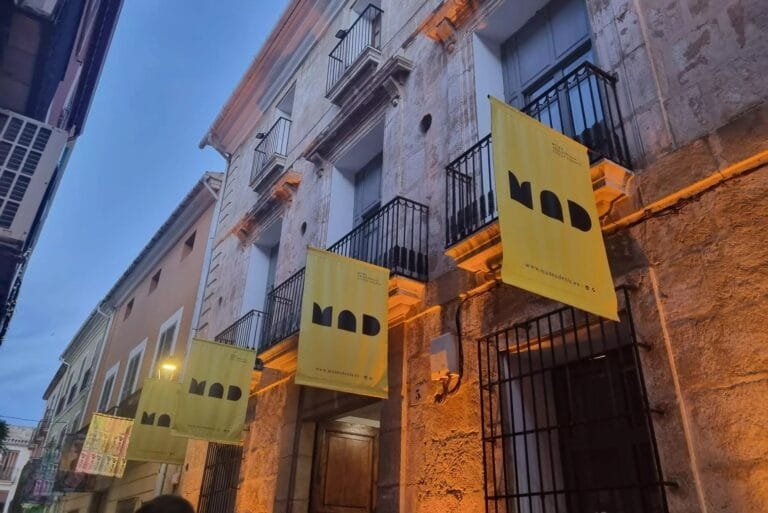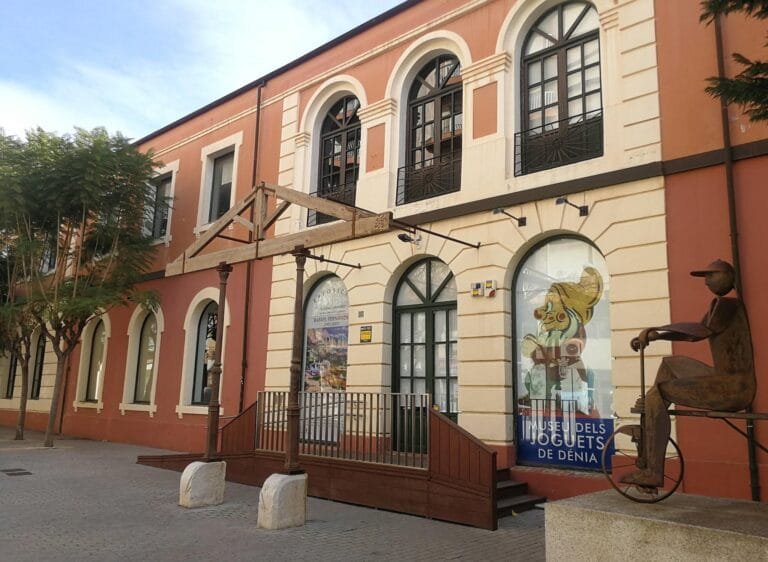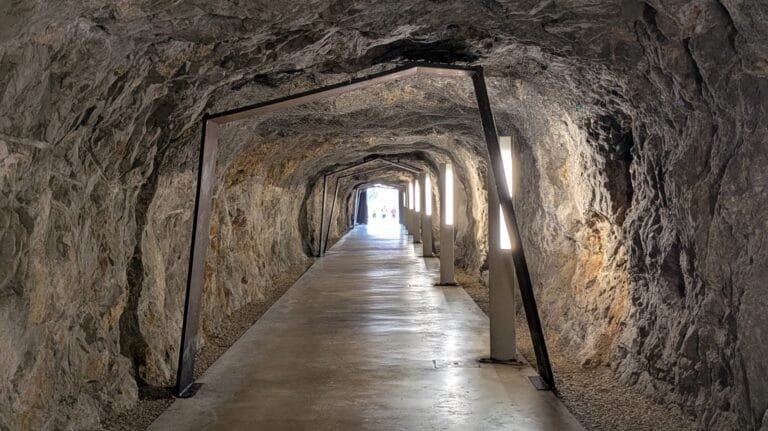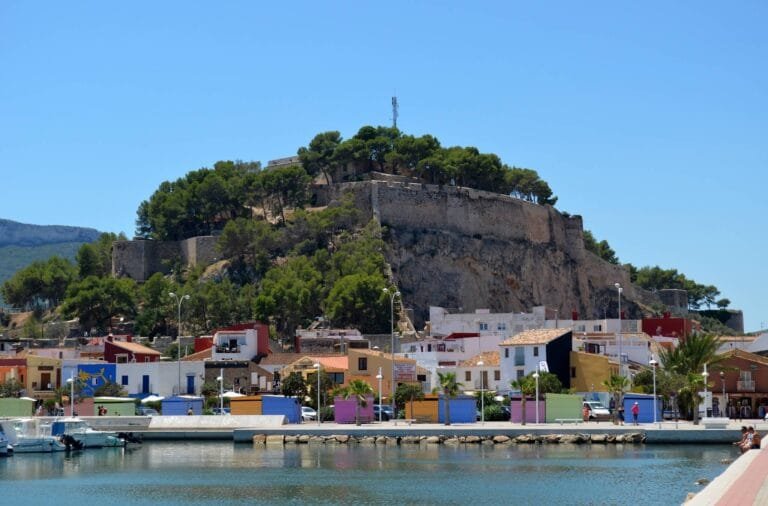Dénia is a city with a deeply maritime soul that can be felt in every corner of its harbour. And if there’s one place where that connection truly comes to life, it’s the “Museu de la Mar” — a cultural space located right by the port that invites visitors to dive into the city’s rich naval history. I discovered it by chance during one of my visits to Dénia, and it turned out to be one of those pleasant surprises that turn a short getaway into a lasting memory.
Housed inside the old fish market, now fully restored and with large windows overlooking the harbour, it feels like a threshold between two eras. And the best part: admission is free. Without a doubt, it’s a must-see for the curious, for travellers with a passion for history, and for anyone wishing to understand why the sea is much more than just a backdrop in this city.
Why a Sea Museum in Dénia?
The existence of the Museu de la Mar is not a recent idea or a tourist whim. It is the natural outcome of centuries of close ties between Dénia and the Mediterranean.
Since its days as a naval base during the Roman Republic, when General Sertorius used the harbour as a strategic stronghold, Dénia has been a vital hub for trade, defence and seafaring life. During the Middle Ages, with the creation of the Taifa of Daniya, the port became a key commercial centre in the 11th century.
In the 15th century, it served as a refuge for corsairs, and in 1609 it witnessed the painful episode of the expulsion of the Moriscos, who departed into exile from this very port. After being almost completely destroyed in 1705, it rose again in the 18th century and experienced an economic boom in the 19th thanks to the raisin trade, which exported Dénia’s prized product across much of Europe.
Today, Dénia’s harbour still beats with energy. Ferries to the Balearic Islands, luxury yachts and fishing boats all share the same waters in a place filled with living history. The museum captures all of this essence, and upon entering, you can’t help but feel as though you’re stepping into the historical heart of the city.
A Tour of the Museu de la Mar: What to See
The exhibition follows a chronological order, spanning from the 6th century BC to the early 20th century, covering all the historical stages of Dénia’s close relationship with the sea. The museum houses more than 400 archaeological and ethnological pieces, each with its own story to tell.
Here are a few that really caught my attention:
- Ancient amphorae dating from the 3rd century BC to the 1st century AD. These vessels once carried wine, oil or salted fish during Roman times – now frozen in history.
- Remains of the frigate La Guadalupe, which sank off the coast of Dénia. Seeing the remains and learning its story was a moving experience.
- Ship models: beautifully detailed replicas of galleons, local fishing boats, and even the English warship Prince Royal. Each one is a work of art illustrating the evolution of naval architecture.
- Everyday objects: from wooden pulleys and crockery to pipes used by sailors. These items humanise history, showing the daily lives of those who once lived in this coastal city.
- Gold and silver coins from the reigns of Charles III and Charles IV, offering a glimpse into the trade and economy of another era.
- Historic photographs providing an immediate emotional connection with Dénia in the 20th century.
Technology and Tradition: Audiovisuals and Innovation in Storytelling
In addition to the showcases and physical artefacts, the Museu de la Mar features a modern audiovisual room that stands out for its quality. It screens videos that tell the story of local fishing, maritime traditions, and underwater archaeology in the area.
This multimedia component perfectly complements the visit, especially if you’re travelling with children or teenagers. It explains complex concepts visually and adds deeper context to everything displayed throughout the museum.
The Space: Living History Inside the Old Fish Market
One of the things I appreciated most was the location of the museum. It’s not a modern, soulless building, but rather the old fish market, which operated until 1997. After a careful restoration, it’s now an open, airy space filled with natural light and offering an unbeatable view of the harbour.
The sea seeps in through the windows, and while you admire a model or an old photograph, you can turn your head and gaze at the very same sea that inspired those stories.
Before You Go: Location, Opening Hours and Accessibility
📍 Location: The Museu de la Mar is located at Explanada Cervantes, 2, right in Dénia’s harbour area. It’s a prime spot, surrounded by restaurants, the marina and other attractions.
💸 Admission: Free of charge.
🕘 Opening hours:
- From October to April: 10:00 to 13:00 and 16:00 to 20:00.
- From May to September: 10:00 to 13:00 and 17:00 to 21:00.
- Closed on 25 December and 1 January, and in the afternoon on 24 and 31 December.
♿ Accessibility: Fully accessible. The museum is wheelchair-friendly throughout.
Beyond the Museum: Things to Do Around the Harbour
The beauty of the Museu de la Mar is that the experience doesn’t end when you step outside. Everything around it invites you to keep exploring. I recommend:
- Strolling along the Explanada Cervantes and the Muelle de Ribera, where luxury yachts and traditional fishing boats share the same space.
- Visiting the open-air exhibition “Sculptures Facing the Sea”, an artistic display full of surprises.
- Wandering through Baix la Mar, the old fishermen’s quarter, filled with colourful houses and charming bars.
- Climbing up to the Castle of Dénia to see the city from another perspective and better understand its history.
- Visiting the Archaeological Museum and the Ethnological Museum to complement your visit with another cultural angle. Both are also completely free of charge.
- And of course, enjoying good food. Dénia is a UNESCO Creative City of Gastronomy, and it shows in every restaurant.
Did you enjoy this visit? Discover more about Dénia
If you found this article useful, there’s plenty more to explore on playasdenia.es. Visit our Blog where you’ll find everything from hiking routes and hidden beaches to food recommendations and cultural getaways like this one.
📲 Share it with whoever you’d like to visit Dénia — or with those friends who haven’t discovered this museum yet. It’s a visit that truly deserves more recognition!

